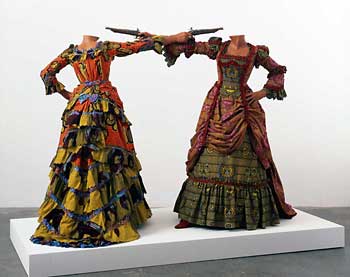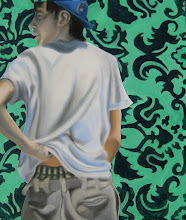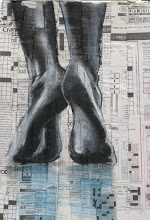What you need to know:
• Proto-Greek – differences in Minoan and Mycenaean architecture, the role of women abstraction in Cycladic art, Schliemann vs. Evans
• Greek – 5 periods (and approximate date) and stylistic characteristics; what is mimesis; Parthenon vs. Pantheon; Hellenic vs. Hellenistic; characteristics of Greek temple plans; Archaic vase painting (red figure, black figure) differences and development (and creators ); Greek temples vs. Roman; sculptural program of the Acropolis; sculptors (Polyclitus, Praxiteles, Lysippos, Scopas, Myron); Pericles, Polygnotos of Thasos
• Etruscan – who they were; temple differences from Greek; funerary practices (burial/sarcophagus/cemeteries); role of Etruscan women; characteristics of Etruscan sculpture, tomb painting
• Roman – concepts of appropriation, propaganda, utilitarianism, pragmatism; 4 styles of Roman painting; contributions to architecture; development of temples (similarities and differences from Greek and Etruscan); Pantheon; Public works – Roman Forum, baths, basilica (development), amphitheater; triumphal arches, commemorative columns, altars (function, context, content); Christianity/official religion
• Vocabulary – curvilinear, abstraction, chryselephantine, citadel, courses, corbelling, dromos, megaron, tholos, cyclopean masonry, repousse, dipylon vase, raking, isocephaly, frieze, gigantomachy, verisimilitude, mausoleum, cornice, metope, triglyph, peripteral, peristyle, stylobate, stereobate, pediment, entasis, colonnade, dentils, cella, architrave, caryatid, contrapposto, peplos, necropolis, tumulus, sarcophagus, barrel vault, groin vault, oculus, psedo-peripteral, apse, springing, voussoirs, caliderium, tepidarium, frigidarium amphitheater, clerestory, nave, aisles forum, cuirass, illusionism, pragmatism, utilitarianism, appropriation, eclecticism
Images to know:
• Proto-Greek – Cycladic figures, Palace of Knossos, Snake Goddess, Kamares Pottery, Tholos Tomb (Treasury of Atreus), Lion Gate, Agamemnon’s Mask, Citadel of Tiryns
• Greek – Dipylon vases, Lady of Auxerre, various kore, Temple of Artemis, Temple of Hera I at Paestum, Kritios Boy, Charioteer, Temple of Athena Parthenos (Parthenon), chryselephantine Athena Parthenos, Doryphoros, Apoxyomenos (Lysippos), Skopas images (sculptor), Altar of Zeus, Laocoon and Sons, Barberini Faun, Dying Gaul, Seated Boxer, Erecthian
• Etruscan – terra cotta Apollo at Veii, Tomb of the Leopards, Tomb of the Reliefs, Etruscan temple, Reclining Couple (Husband and Wife) Sarcophagus, Aule Metele
• Roman – Temple of Fortuna Virilis, Sanctuary of Fortuna, portrait of Roman general, Ara Pacis Augustan, Pont du Gard, maison Carree, Colosseum, portrait of Vespasian, arches of Titus and Constantine, Forum of Trajan, Column of Trajan, Arch of Trajan, Pantheon, Augustus Primaporta, Hadrian’s Villa, Baths of Neptune, pedestal Column of Antoninus Pius, Equestrian statue of Marcus Aurelius, painted portrait of Septimius Severus, portrait of Caracalla, Baths of Caracalla, portrait bust of Trajan Decius, Trebonianus Gallus, portrait of Constantine, Basilica of Constantine, four tetrarchs
Friday, October 29, 2010
Saturday, October 23, 2010
Slide List Week 12 10/25/10
You are responsible to know the information on the images below, including the time period they were created in. Quizzes will be graded on complete accuracy of information.
1. Temple of “Fortuna Virilis”, Rome, 75 BCE
2. Head of a Roman Patrician (Otricoli), 75-50 BCE
3. Portrait of a general from Tivoli, Italy, 75-50 BCE
4. The Battle of Issus (Alexander the Great Battling Darius), mosaic, 100 BC
5. Atrium of the House of the Silver Wedding (Pompeii), 1st century BCE
6. First Style (Masonry Style) wall painting, Samnite House late 2nd century BCE
7. Dionysiac mystery frieze, Second Style, Villa of the Mysteries, Pompeii, 60-50 BCE
8. Ixion Room of the House of the Vettii, Fourth Style, (Pompeii), 70-79 CE
9. Portrait of baker and his wife, wall painting, Pompeii, 70 – 79 CE
10. Augustus (Primaporta), copy of a bronze original, 20 BCE
1. Temple of “Fortuna Virilis”, Rome, 75 BCE
2. Head of a Roman Patrician (Otricoli), 75-50 BCE
3. Portrait of a general from Tivoli, Italy, 75-50 BCE
4. The Battle of Issus (Alexander the Great Battling Darius), mosaic, 100 BC
5. Atrium of the House of the Silver Wedding (Pompeii), 1st century BCE
6. First Style (Masonry Style) wall painting, Samnite House late 2nd century BCE
7. Dionysiac mystery frieze, Second Style, Villa of the Mysteries, Pompeii, 60-50 BCE
8. Ixion Room of the House of the Vettii, Fourth Style, (Pompeii), 70-79 CE
9. Portrait of baker and his wife, wall painting, Pompeii, 70 – 79 CE
10. Augustus (Primaporta), copy of a bronze original, 20 BCE
Sunday, October 17, 2010
APAH Slide List Quiz 10/19/10
You are responsible to know the information on the images below, including the time period they were created in. Quizzes will be graded on complete accuracy of information.
1. Fibula with Orientalizing lions, Regolini-Galassi Tomb,650-640 BCE
2. Apulu (Apollo), Portonaccio Temple (Veii), 510-500 BCE
3. Sarcophagus of the Spouses (Cerveteri), 520 BCE
4. Tomb of Shields and Chairs, main chamber, 600 BCE
5. Tomb of the Reliefs, (Cerveteri), 3rd century BCE
6. Banqueters and musicians, the Tomb of the Leopards (Tarquinia), 480-470 BCE
7. Diving and fishing, Tomb of Hunting and Fishing (Tarquinia) 530-520 BCE
8. Capitoline Wolf (Rome), 500-480 BCE
9. Sarcophagus of Ramtha Visnai (Vulci), 300 BCE
10. Aule Metele (Arringatore, Orator), early 1st century BCE
List the individual time periods for each piece and bring in Friday, 10/23/09 - Quiz Day!
1. Fibula with Orientalizing lions, Regolini-Galassi Tomb,650-640 BCE
2. Apulu (Apollo), Portonaccio Temple (Veii), 510-500 BCE
3. Sarcophagus of the Spouses (Cerveteri), 520 BCE
4. Tomb of Shields and Chairs, main chamber, 600 BCE
5. Tomb of the Reliefs, (Cerveteri), 3rd century BCE
6. Banqueters and musicians, the Tomb of the Leopards (Tarquinia), 480-470 BCE
7. Diving and fishing, Tomb of Hunting and Fishing (Tarquinia) 530-520 BCE
8. Capitoline Wolf (Rome), 500-480 BCE
9. Sarcophagus of Ramtha Visnai (Vulci), 300 BCE
10. Aule Metele (Arringatore, Orator), early 1st century BCE
List the individual time periods for each piece and bring in Friday, 10/23/09 - Quiz Day!
Subscribe to:
Posts (Atom)






